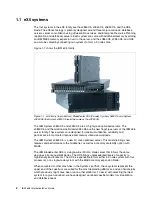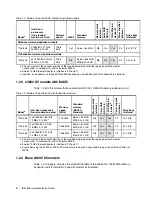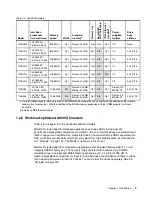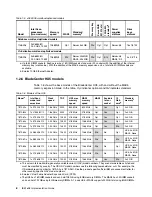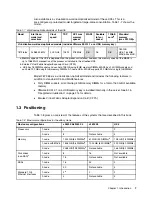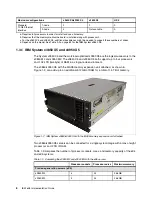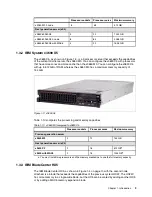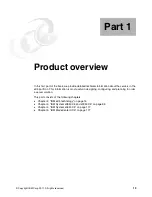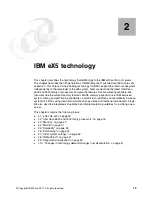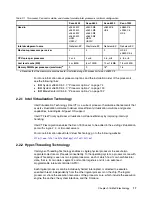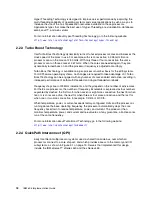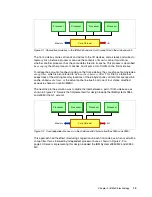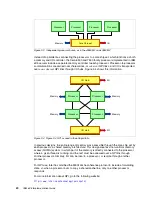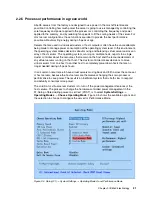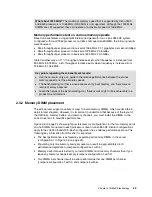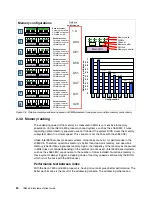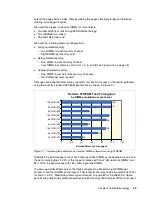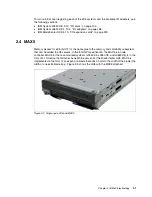
16
IBM eX5 Implementation Guide
2.1 eX5 chip set
The members of the eX5 server family are defined by their ability to use IBM fifth-generation
chip sets for Intel x86 server processors. IBM engineering, under the banner of Enterprise
X-Architecture (EXA), brings advanced system features to the Intel server marketplace.
Previous generations of EXA chip sets powered System x servers from IBM with scalability
and performance beyond what was available with the chip sets from Intel.
The Intel QuickPath Interconnect (QPI) specification includes definitions for the following
items:
Processor-to-processor communications
Processor-to-I/O hub communications
Connections from processors to chip sets, such as eX5, referred to as
node controllers
To fully utilize the increased computational ability of the new generation of Intel processors,
eX5 provides additional memory capacity and additional scalable memory interconnects
(SMIs), increasing bandwidth to memory. eX5 also provides these additional reliability,
availability, and serviceability (RAS) capabilities for memory: Chipkill, Memory ProteXion, and
Full Array Memory Mirroring.
QPI uses a source snoop protocol. This technique means that a CPU, even if it knows
another processor has a cache line it wants (the cache line address is in the snoop filter, and
it is in the shared state), must request a copy of the cache line and wait for the result to be
returned from the source. The eX5 snoop filter contains the contents of the cache lines and
can return them immediately. For more information about the source snoop protocol, see
2.2.4, “QuickPath Interconnect (QPI)” on page 18.
Memory that is directly controlled by a processor can be accessed faster than through the
eX5 chip set, but because the eX5 chip set is connected to all processors, it provides less
delay than accesses to memory controlled by another processor in the system.
2.2 Intel Xeon 6500 and 7500 family processors
The IBM eX5 servers use the Intel Xeon 6500 and Xeon 7500 family of processors to
maximize performance. These processors are the latest in a long line of high-performance
processors:
The Xeon 6500 family is used in the x3690 X5 and BladeCenter HX5. These processors
are only scalable to up to two processors. This processor does not support the ability to
scale to multiple nodes; however, certain models support MAX5.
The Xeon 7500 is the latest Intel scalable processor and can be used to scale to two or
more processors. When used in the IBM x3850 and x3950 X5, these servers can scale up
to eight processors. With the HX5 blade server, scaling up to two nodes with four
processors is supported.
Table 2-1 on page 17 compares the Intel Xeon 6500 and 7500 with the Intel Xeon 5500 and
5600 processors that are available in other IBM servers.
Содержание x3850 X5
Страница 2: ......
Страница 3: ...International Technical Support Organization IBM eX5 Implementation Guide May 2011 SG24 7909 00...
Страница 20: ...xviii IBM eX5 Implementation Guide...
Страница 32: ...12 IBM eX5 Implementation Guide...
Страница 34: ...14 IBM eX5 Implementation Guide...
Страница 74: ...54 IBM eX5 Implementation Guide...
Страница 136: ...116 IBM eX5 Implementation Guide...
Страница 238: ...218 IBM eX5 Implementation Guide...
Страница 392: ...372 IBM eX5 Implementation Guide...
Страница 466: ...446 IBM eX5 Implementation Guide...
Страница 484: ...464 IBM eX5 Implementation Guide Figure 9 14 IMM Remote Control Video Viewer showing power control options...
Страница 560: ...540 IBM eX5 Implementation Guide...
Страница 564: ...544 IBM eX5 Implementation Guide...
Страница 578: ...IBM eX5 Implementation Guide IBM eX5 Implementation Guide...
Страница 579: ......

